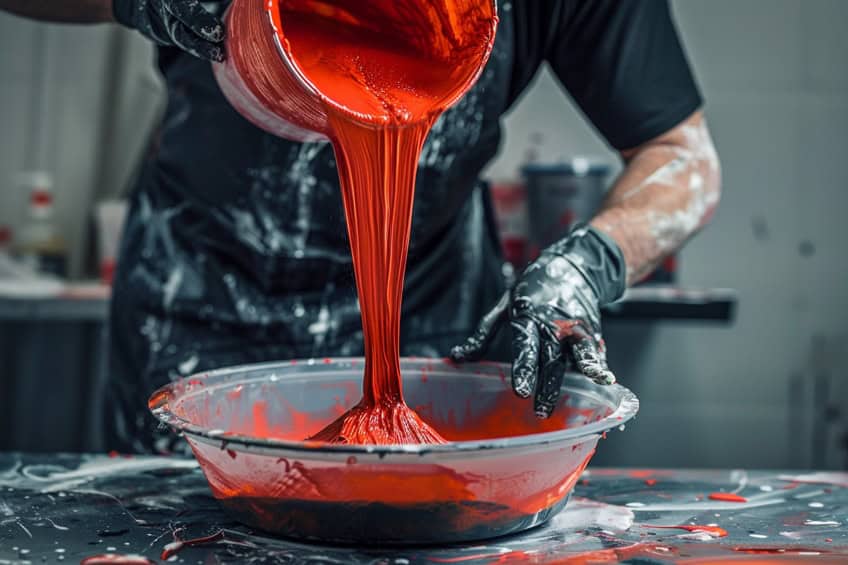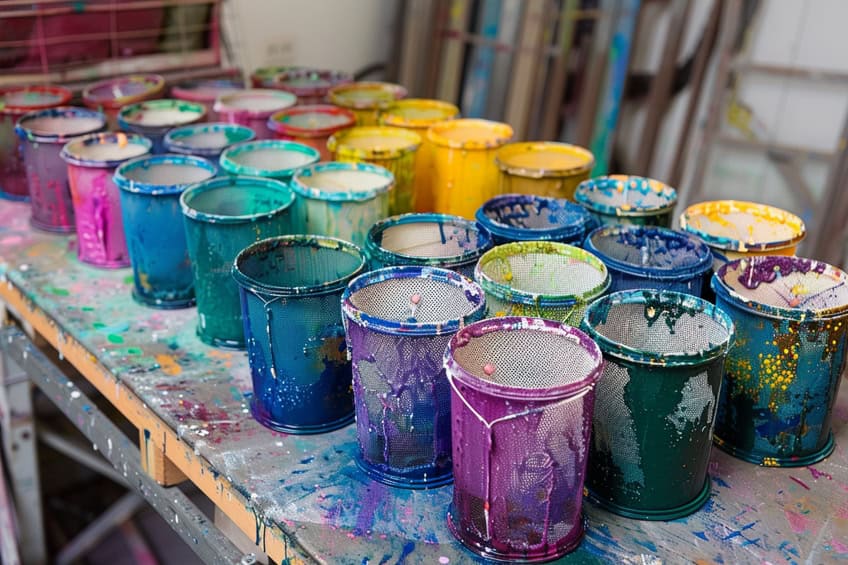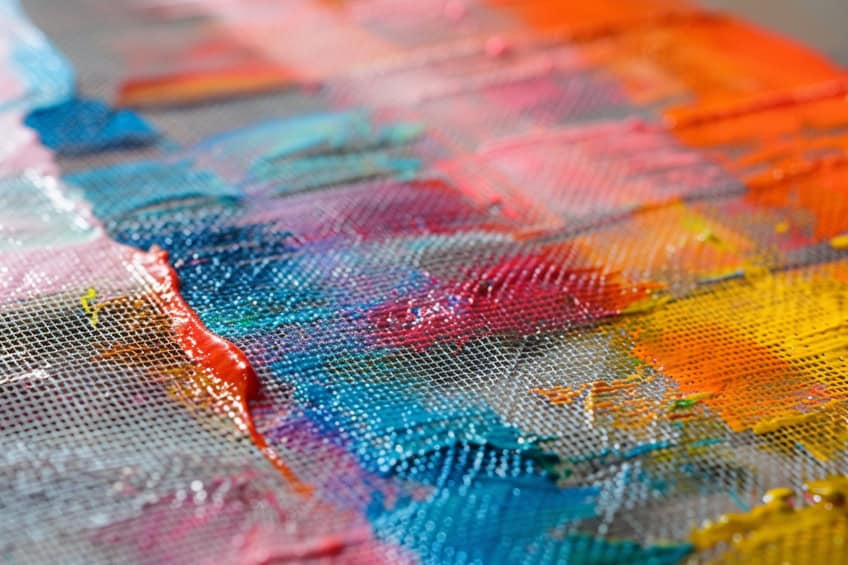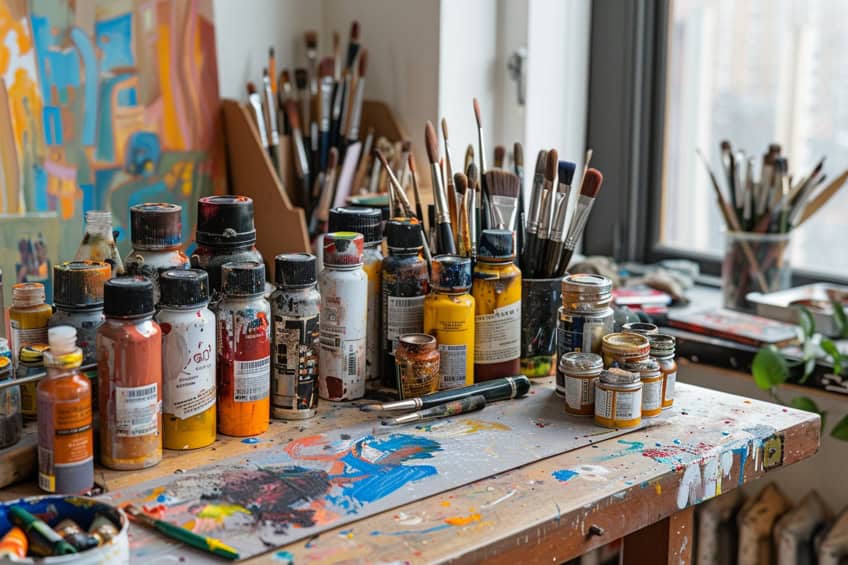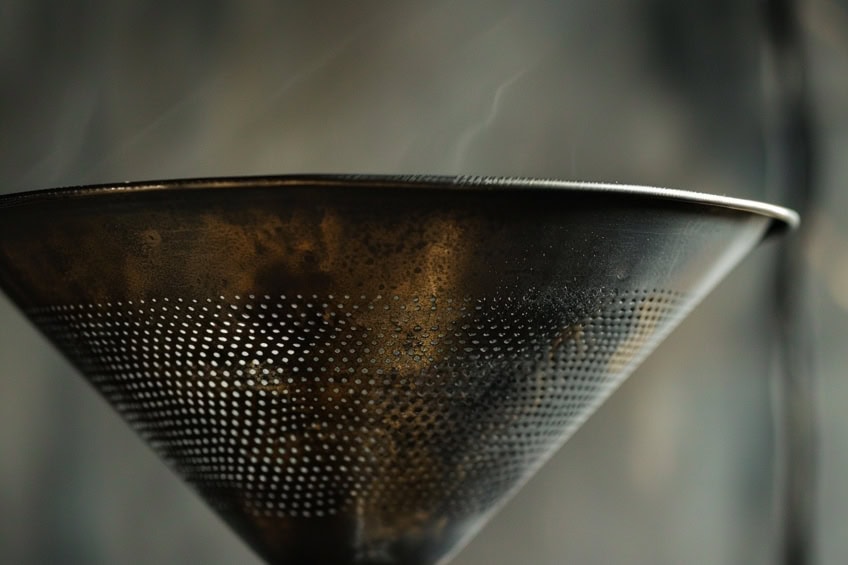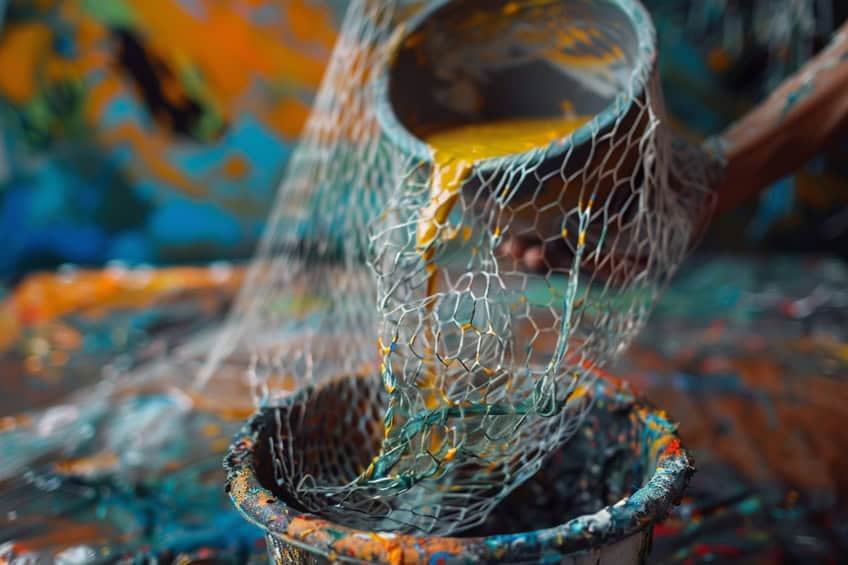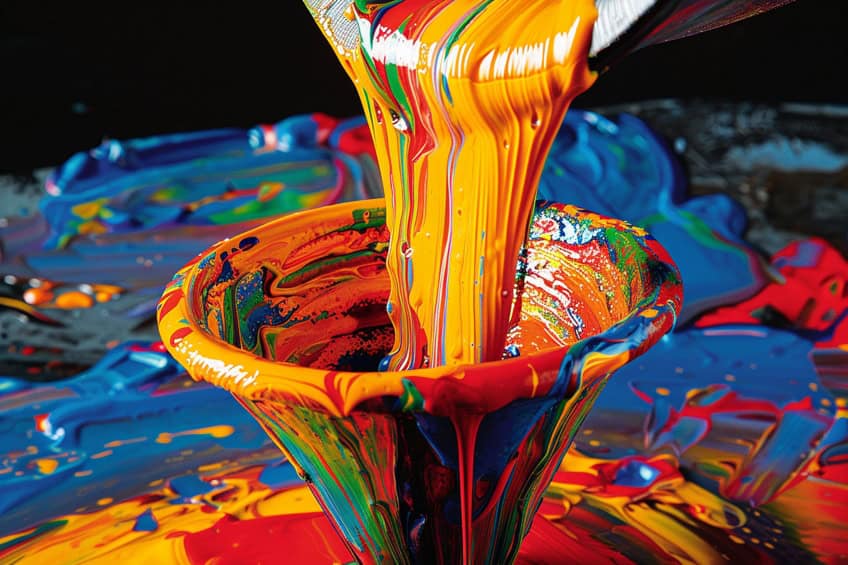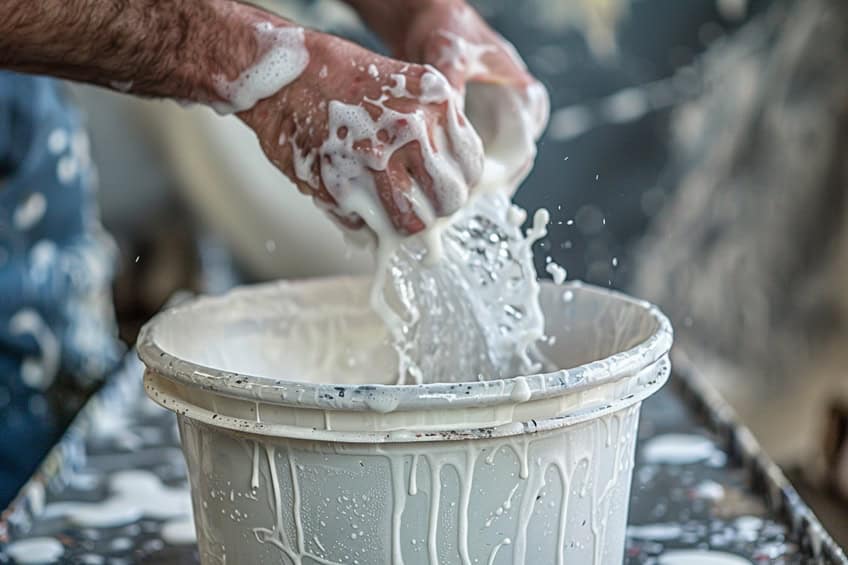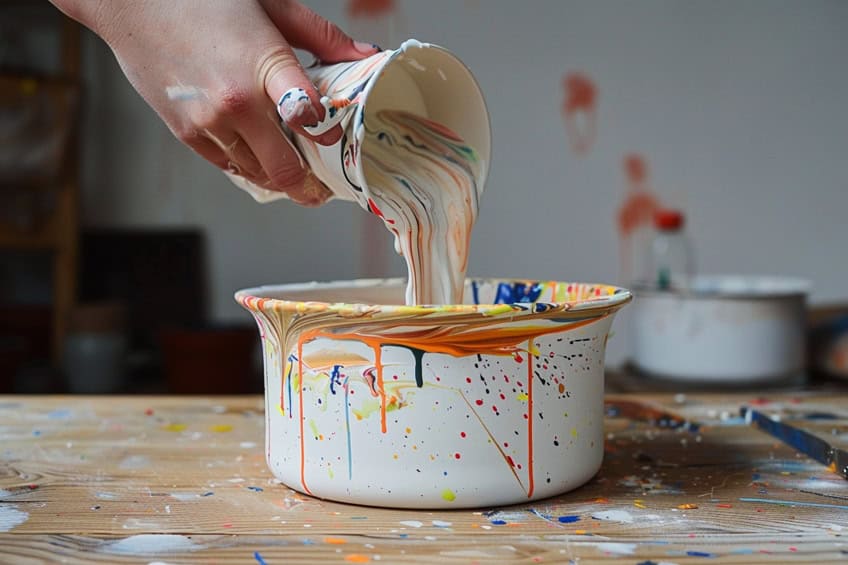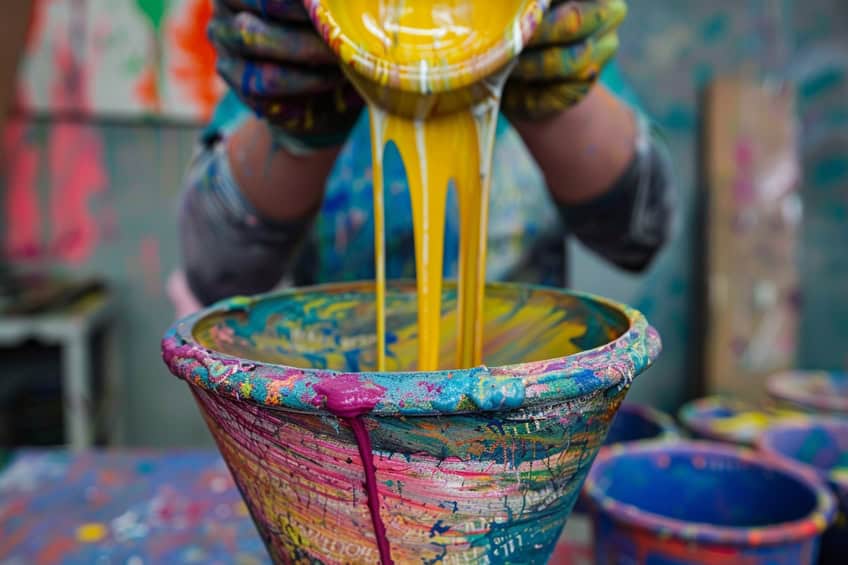How to Strain Paint – No Lumps, No Bumps!
This post may contain affiliate links. We may earn a small commission from purchases made through them, at no additional cost to you. You help to support resin-expert.com
Are you ready to turn your painting projects into masterpieces without the hassle of lumpy, clumpy paint? Welcome to the world of paint perfection! In this article, we’re diving into the art of straining paint—your secret weapon for achieving smooth, flawless finishes every time. Say goodbye to pesky particles and hello to a canvas of pure perfection. Let’s strain, stir, and paint like pros!
Table of Contents
Key Takeaways
- Straining paint removes impurities, providing a smoother finish.
- Proper preparation enhances the efficiency of the straining process.
- Following correct techniques helps prevent common painting issues.
What Does It Mean to Strain Paint?
Straining paint is an essential step in the painting process, often overlooked by amateur painters. It involves filtering out any impurities, such as clumps or debris, which often accumulate in paint over time or as a result of improper storage. Undertaking this process ensures a smooth, clean finish and can significantly improve the quality of a paint job, whether for a professional project or a do-it-yourself home improvement. While the thought of straining paint may seem daunting or unnecessary to some, it is a simple and quick practice that can save time and frustration during the application process.
Proper preparation, using the correct tools, and following the right techniques can make straining paint an easy addition to one’s painting routine. Not only does it provide immediate benefits in the appearance of paint, but it also helps prevent issues such as clogging of spray equipment and the need for multiple coats due to uneven application. The method involves pouring paint through a filtering tool like a mesh strainer or a piece of fine, porous fabric, such as pantyhose, into a clean container.
The strainer acts as a sieve, capturing any undesirable particles that are suspended in the paint.
Here are key points to consider about straining paint:
- Purpose: To produce debris-free paint for a smoother, more professional finish.
- Recommended tools: Mesh paint strainers, pantyhose, or other fine synthetic fabrics.
- Process: The strained paint becomes smoother and more homogeneous, which is essential, particularly when using paint spraying equipment. Straining improves the paint’s adherence to surfaces and reduces the likelihood of imperfections.
Paint strainers come in various mesh sizes. A finer mesh, characterized by a higher number of openings per inch, provides a more thorough straining but can clog more easily. The choice of strainer should depend on the purity of the paint and the desired finish quality. Users should exercise caution when handling paint and strainers to prevent spills and splatters. Ultimately, straining is a straightforward step that can greatly improve the results of both DIY and professional painting projects by guaranteeing a clean, even coating.
Why Should You Strain Paint?
Straining paint is an important step in the painting process to ensure a smooth, professional finish. The primary reasons for straining paint are:
- Removal of impurities: Over time, paint can develop lumps, clumps, or “floaters” due to debris or the settling of ingredients. Straining removes these impurities, preventing them from leaving unsightly marks or textures on the painted surface.
- Prevention of equipment clogs: Paint sprayers and other equipment can get clogged with particulates that haven’t been filtered out. Clean paint prolongs the life of these tools and ensures their proper functioning.
- Enhanced adhesion: Removing particles helps paint adhere to surfaces more uniformly, reducing the potential for peeling or blistering.
- Consistency in application: Unstrained paint can have inconsistent texture, leading to uneven coats. Strained paint has a consistent viscosity that facilitates even application.
- Optimal finish: For projects demanding a high-quality finish, like automotive painting or furniture refinishing, strained paint is vital to achieving a smooth, blemish-free surface.
In essence, straining paint is a simple yet critical step for anyone aiming to achieve a clean, even, and durable paint job.
Preparing to Strain Paint
Proper preparation is crucial for a successful paint straining process. It involves gathering the right materials and setting up the work area to ensure a clean and efficient straining operation.
Gathering Necessary Materials
A painter needs to assemble a few key items before straining paint:
- Strainer: A tool specifically designed for filtering out paint impurities.
- Bucket: A clean container to capture the strained paint.
- Gloves: To protect hands from paint.
Stockings
One economical and effective method is to use nylon tights or stockings as a strainer. They require:
- Nylon tights: Clean and free from holes.
- Scissors: To cut the tights to the appropriate size.
Wire Mesh
For larger quantities or thicker paint:
- Wire mesh or cheesecloth: Chosen based on the desired fineness of the straining.
- Frame: To hold the mesh over the bucket.
Cone Filter
For precise and professional applications:
- Cone filter or paint strainer: Store-bought and available in various micron sizes.
- Funnel or strainer holder: To support the filter over the container.
Setting up the Work Area
The straining area must be:
- Clean: To avoid additional contaminants.
- Protected: Use a drop cloth to catch drips or spills.
- Stable: Ensure the bucket or container is on a flat surface to prevent tipping.
Straining Process
The straining process involves the careful selection of a suitable strainer and understanding the techniques to effectively filter out unwanted impurities from paint, ensuring a smooth application.
Choosing the Right Strainer
When straining paint, it’s important to match the filter to the type of paint in use. Latex paints usually require a fine mesh strainer or a cone strainer to remove any clumps and impurities. In contrast, oil-based paints may be strained using even finer filters to catch smaller particles.
For large volumes or rough impurities, a window screen might suffice.
- Fine mesh strainers: Ideal for most paint types, offering a balance between practicality and thoroughness.
- Cone strainers: Common in professional settings, they fit well over containers and are disposable.
- Pantyhose: A thrifty alternative that can act as a fine filter, particularly for small quantities of paint.
- Window screens: Suitable for initial straining of paint with larger debris, but not for fine filtering.
Techniques for Effective Straining
Techniques for straining paint properly can influence the end result of a painting project. Paint should be stirred before being strained to ensure any solids are evenly distributed and can be caught by the filter. The paint can be poured slowly through the chosen filter—placed over a clean container or bucket—making sure it’s done in a controlled manner to prevent spills.
- Pouring: Gently pour paint through the strainer, avoiding overfilling and spillage.
- Stirring: Before straining, stir the paint to lift settled particles.
Using the appropriate technique and strainer, individuals can efficiently strain both latex and oil-based paints, leading to better coverage and a smoother finish.
After Straining Care
After straining paint, proper care of equipment and disposal of waste is essential to maintain painting tools’ quality and ensure a professional finish.
Cleaning Equipment
Once the paint has been strained and transferred, it is vital to immediately clean the strainers, buckets, and any other equipment used. They should rinse thoroughly with water for water-based paints or mineral spirits for oil-based paints. A rag may be employed to wipe off any residual paint, ensuring that the tools are spotless and ready for future use.
Disposing of Waste
The waste material collected during the straining process must be disposed of correctly. Solid waste should be allowed to dry completely before disposal. For environmental safety, one should consult with local waste management authorities to determine the appropriate method of disposal, as it can vary by location.
This attention to disposal is crucial to avoid environmental contamination and adhere to local regulations.
Troubleshooting Common Issues
When straining paint, it’s not uncommon to encounter issues such as strainer blockages or an inconsistent finish. These problems can impact the quality of the paint job. Here are effective strategies to overcome these setbacks.
Addressing Strainer Blockages
Common Causes: Blockages generally occur due to an accumulation of debris, such as dirt, clumps, and dried paint particles.
- Preventive measures: Ensure regular cleaning of the strainer to prevent buildup. For heavier particles, using a thicker mesh may be beneficial.
- Resolution steps: If a blockage occurs, stop the process and carefully remove the excess debris. Rinse the strainer if necessary, or replace it if it’s no longer functional.
Fixing Inconsistent Paint Finish
Inconsistent finish signs include the presence of lumps or an uneven texture upon application. Some preventative measures and corrections include:
- Manual straining: Double-check that the paint sieve or strainer is clean and free of previous residue before each use.
- Touch-ups: If the finish is already applied, wait for it to dry, and then sand down the affected area before reapplying a strained layer of paint.
- Equipment check: For spraying applications, ensure the sprayer nozzle is clean and unclogged to avoid splotchy distribution of the paint.
By following these pointers, one can maintain a smooth and professional paint job, minimizing the appearance of imperfections and prolonging the lifespan of both the paint and equipment.
As we wrap up our paint-straining journey, you’re now equipped with the knowledge and tools to elevate your painting game to new heights. With a smooth, clump-free canvas at your fingertips, your creative visions can come to life with ease. So go forth, unleash your artistic prowess, and let every stroke be a testament to the beauty of a well-strained paint. Happy painting!
Frequently Asked Questions
What Materials Can Be Used to Strain Paint If I Don’t Have a Dedicated Paint Strainer?
One can utilize household items such as an old nylon stocking or thin fabric like a cotton T-shirt. Wire mesh or window screens are also effective substitutes, but ensure they are secured over the container to prevent them from falling in while pouring paint.
What Is the Process for Straining Paint to Use in a Paint Sprayer?
When preparing paint for a sprayer, pour the paint through a strainer into a clean container. This process removes clumps that could clog the sprayer. For best results, use a fine mesh strainer or a paint filter designed specifically for sprayers.
What Are Some Effective DIY Methods for Straining Paint?
A DIY method can consist of draping a piece of cloth over a bucket and securing it with clips, creating a makeshift strainer. Alternatively, a clean, stretched-out pantyhose over the opening of a container to filter the paint as it is poured can also be effective.
Is Cheesecloth an Effective Material for Straining Paint?
Cheesecloth is effective for straining paint due to its fine weave. To use, one would layer the cheesecloth over a container and secure it before pouring the paint through. The layers can be doubled up for finer straining needs.


